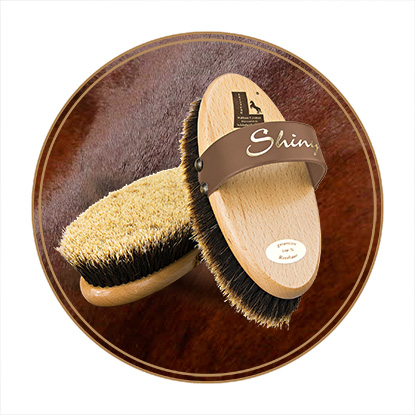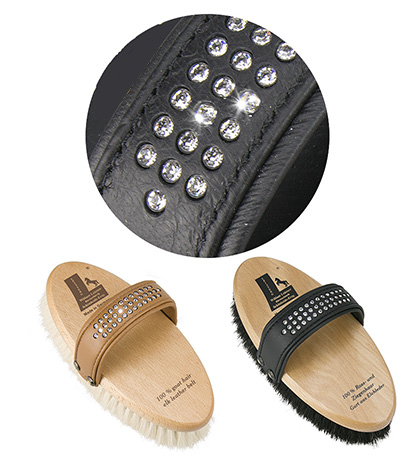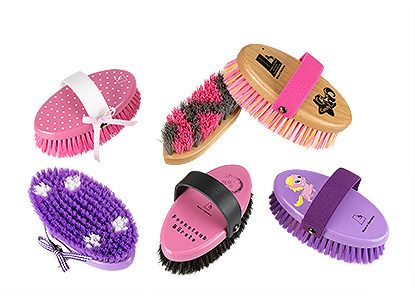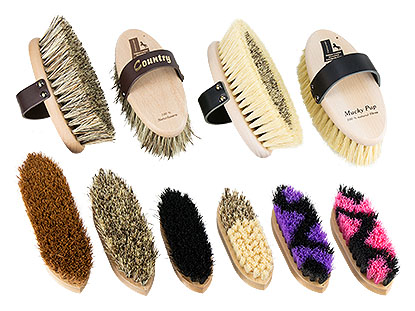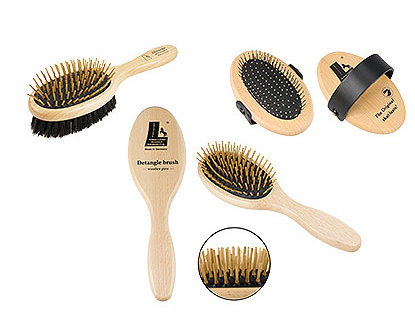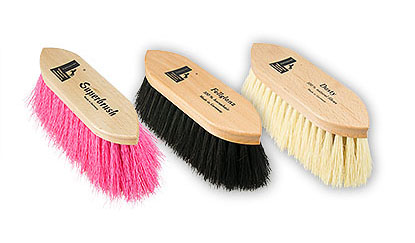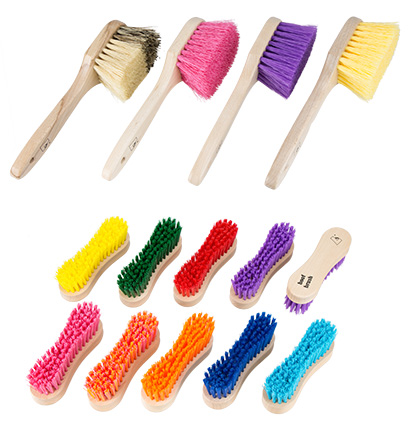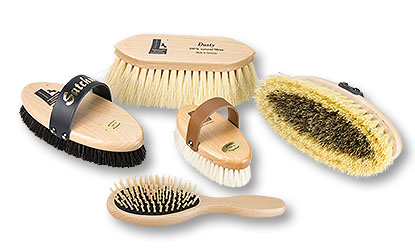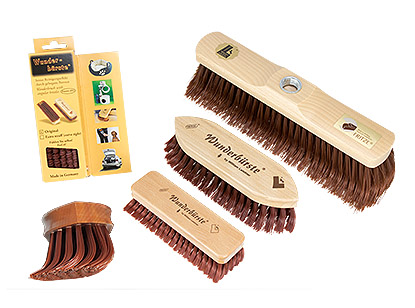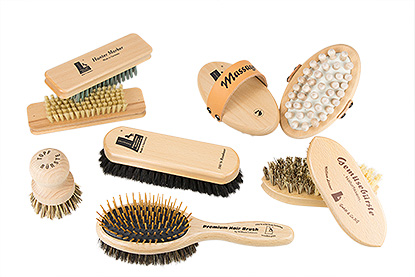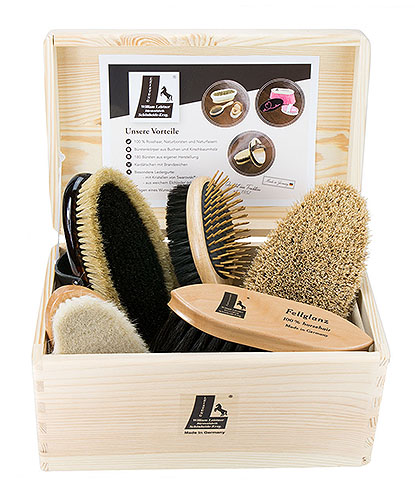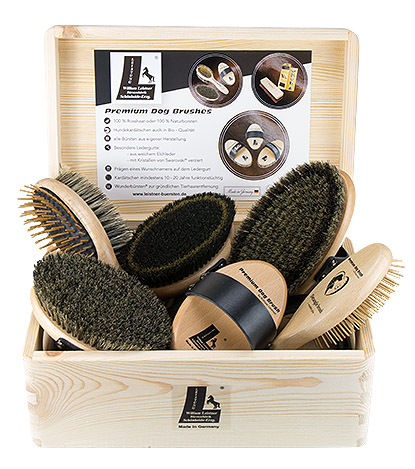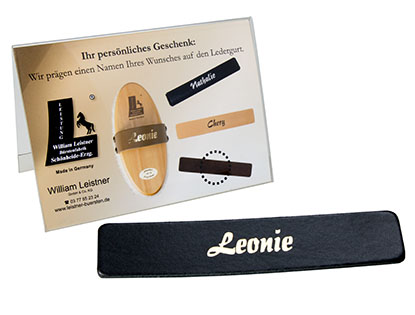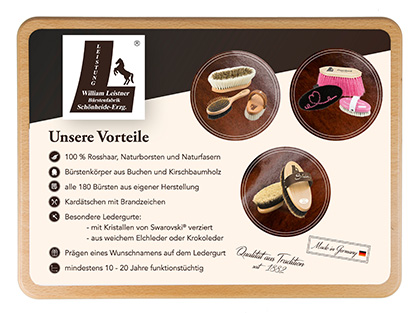information / service
Name engraving
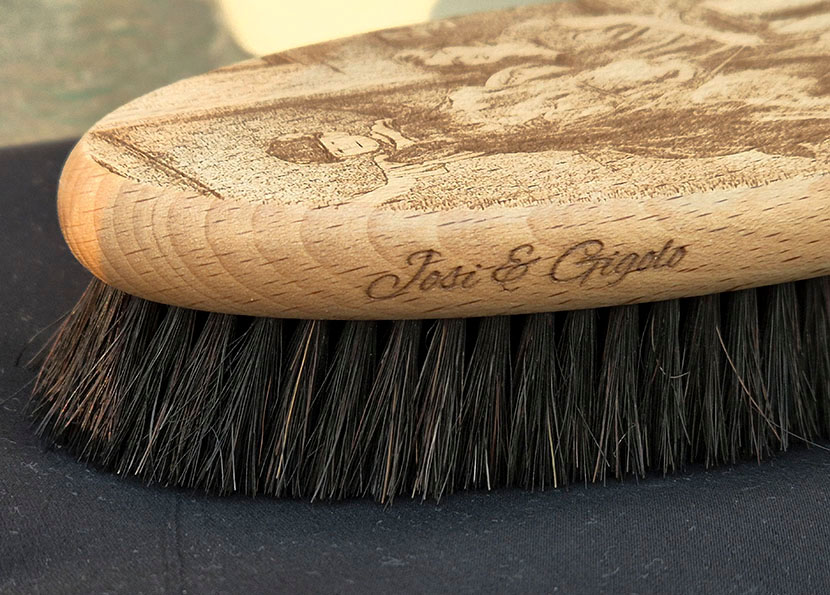
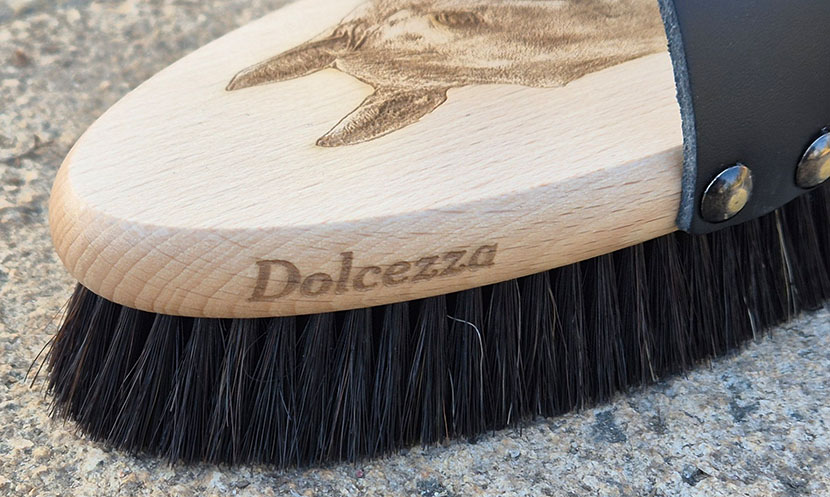
We design our grooming brushes for horses and dogs individually for your customer.
For an additional charge, we will gladly engrave any desired name on the side or in another suitable location on the brush wood.
For more information please click here
Photo engraving
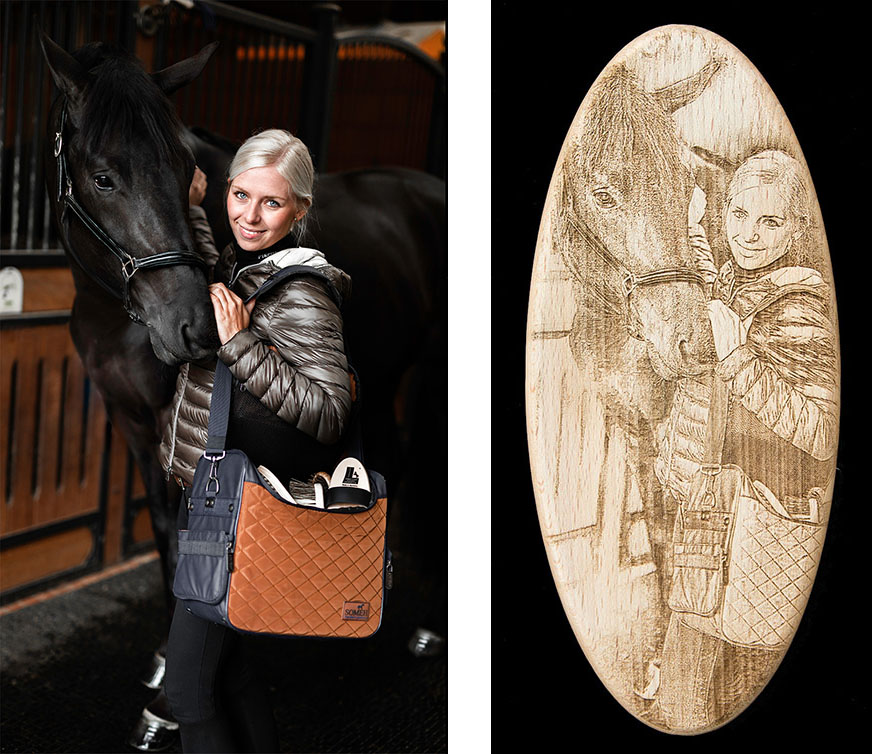
We can customize our horse grooming brush for your customers – on request, we can engrave any photo into the wood for an additional charge.
For more information please click here
leather belt embossing
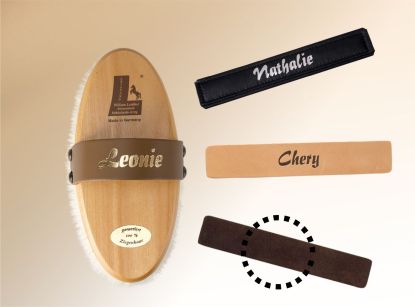
Design our grooming brushes individually for your custumer. For an extra charge, we emboss any desired name in the leather strap.
Customers logo
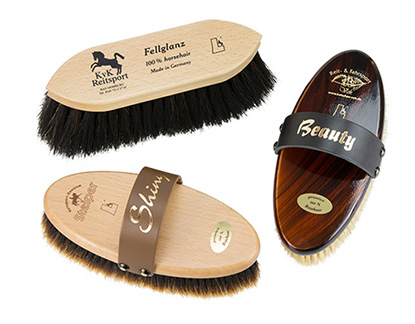
We apply your logo in place of ours. (not possible at Wunderbürste® by William Leistner and Wunderbesen (wonderbroom)
Download product pictures
Here you can download our pictures.
Download the company logo of William Leistner
Here you can download our logo.
company portrait for homepage/webshop of retailers
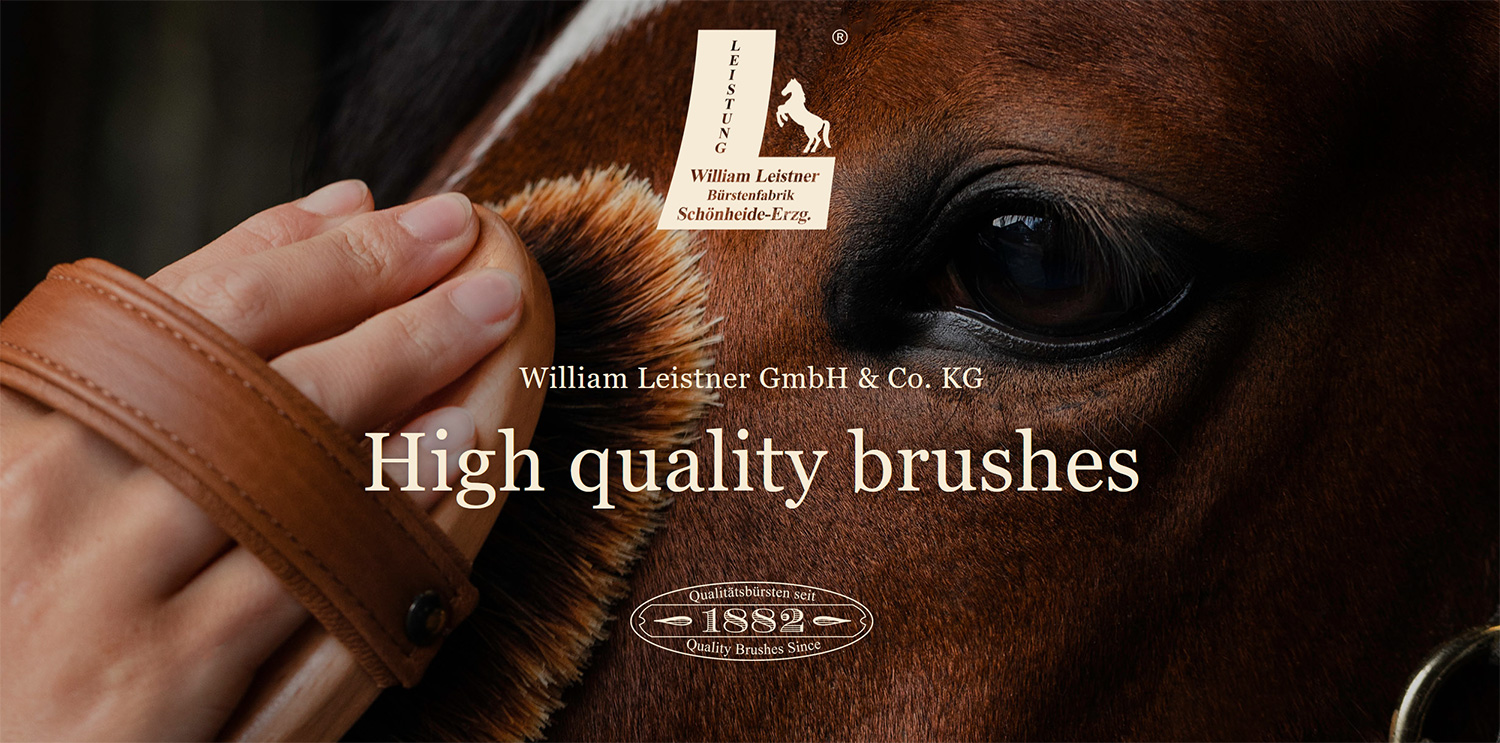
The high quality standard demands of the William Leistner company
The company William Leistner GmbH & Co. KG is a traditional family company
in the Erzgebirge/Saxony and is working in the fifth generation now.
Thanks to 143 years of experience and craftsmanship, the company produces
around 190 different high-quality and durable brushes for horses and dogs
with best materials and excellent workmanship.
A large part of the grooming brushes are made from:
- 100 % horsehair especially tight from the horse's tail
- 100 % pig bristles
- 100 % natural fibers
- beech wood from local forests
This guarantees the best cleaning effects with gentle, skin-friendly care, and
massage effect and without any electrostatic charge!
Good price-performance ratio for grooming brushes with 100 % horsehair or
100 % pig bristles thanks to a lifespan of 10-20 years.
The brushes are environmentally sustainable.
The high-quality synthetic bristles made of PPN, for instance in the
»Superbrush« have a special wavy shape, which means they can pick up a lot
of dirt. These bristles are characterized by a high stability of shape.
All information at: www.leistner-buersten.de
download company portrait as PDF - file
Cleaning instructions for brushes
All beechwood backs of our brushes come from local forests.
These beechwood backs have high strength and are robust.
We have received countless feedback from our customers that the brushes made from it have been in use for 10 to over 20 years,
because all the bundles of bristles are still firmly anchored in this solid wood and the natural bristles have the original length.
Our standard range included washing brushes made of beech wood, which were manufactured for agriculture,
the majority of which were used as can brushes for cleaning the milk cans.
For hygiene reasons, these even had to be boil-proof.
There are riders who have also washed our brushes.
That is why we had until recently on our website that it is no problem to wash our brushes and brushes.
However, a year ago we received pictures in which there were cracks on the caresses.
It was a shock for us at first and we searched meticulously for the causes.
But when testing the wood samples from dozens of woodwork's, we never came to any other result.
Some woods bent after being immersed in the water and or there was a small crack at the top.
The brushes are usable, but there shouldn't be a crack.
We continued to investigate the causes and find out why this happens:
To do this, we have to compare the manufacture of planks from beech a few years ago with today's manufacturing process.
The beech trunks were felled years ago, then left outside for about 3 years.
The wood was able to dry naturally and relax slowly.
Only then were they transported to the sawmill, where the logs were cut into planks and then boards.
These then came into the drying chamber, in which the beech was dried to a certain wood moisture content in about 2-3 days.
After that, the wood was so relaxed that after the bundles had been punched in,
it did not crack when it came into contact with water.
Today, the need for more effective production has not stopped at wood production.
Today the beech trunks are felled, removed immediately and then cut in the sawmill.
The planks then go into highly efficient drying chambers in which the required wood moisture is reached within a few hours.
When this turbo-dried wood comes into contact with water after the production of the brushes,
into which up to 600 bundles are punched, it is not surprising that some of these woods bend slightly or tear at the front.
We therefore recommend brushing the brushes only with a brush cleaner.
In the case of heavy soiling, rubbing with a damp, absorbent cloth helps.
This is also a good tip for grooming with goat hair.
Damage to brushes and brushes caused by the contact of the beech wood with water is excluded from the guarantee.
Shorten straps
The straps of the Leistner brushes can also be shortened in length if necessary. To do this, simply push a narrow screwdriver between the nails and press out each nail individually with light pressure and turning.
Shorten the strap as necessary and use a hammer to knock it back into the hole. If the nails are bent, we can send you a replacement.
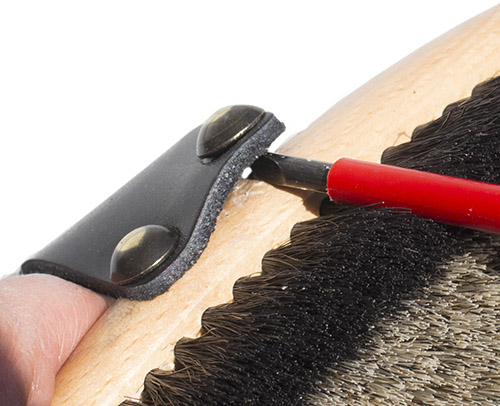
Material science
In the past, the long hair was mainly used to make wigs worn by women and men of the nobility. The short hair was used as cushioning material, as a filling for mattresses, horsehair pillows and riding saddles or in tailoring as an insert.
Because of its special properties, horsehair is also used in the upholstery industry. This outer fabric made of around 70% horsehair (weft) is still needed today for refurbishing old and very high-quality new upholstered furniture and as wall covering for representative old rooms.
All users use the special properties of horsehair such as extreme durability and the permanently high bounce of horsehair.
Tail and mane hair is used in horse brushes and brushes.
We only use the higher quality, firmer material from the tail. Due to the permanently high bounce of horsehair, the hair bundles always return to their old shape after each use.
The surface is rough due to the keratin layer, so dirt particles from the skin and fur can be wonderfully picked up by the brush's horsehair and then stripped off again by the currycomb.
Only hair that is really clean can shine.
Advantages of regular care with brushes with 100% horsehair or in a mixture with other natural fibers:
+ best possible cleaning effect
+ permanently high bounce (always returns to the old shape, thus unsurpassed price / performance ratio of the brushes)
+ Saving on expensive gloss sprays
+ Saving of veterinary costs in the case of dermatitis, favored by unsuitable cleaning supplies
+ Feel-good factor thanks to the massage effect when cleaning
+ Avoidance of the unpleasant electrical charging of the fur when cleaning
Experience has shown that our grooming brushes with 100% horsehair fulfill their function for at least 10-20 years.
Please note our cleaning instructions (above)!
(source among other Wikipedia)
Pig bristles (bristles from domestic pigs or wild boars) are also known as natural bristles. The sole term "bristles" may only be used for pig bristles, but the term "natural bristles" is also valid. The long and strong bristles of the back are mainly used in brush production.
The bristle hair of the pigs is used in brushes and paint brushes. For this purpose, the bristle dresser combed the raw pig bristles to separate the wool, sorted, cleaned with alum water or soap and bleached in the sun or with sulphurous acid, sometimes also dyed.
The tip of the bristle (also called "flag") is split up into three to four fine fibers - comparable to split ends, only the partial fibers of the pig bristles keep their shape. These are important for paintbrushes and brushes. This allows a lot of paint to be absorbed and the paint application is more even. Together, the tips create a soft surface, so that the painted surfaces or layers of paint that have already been applied are not scratched. When the bristle tip wears out, the process of splitting continues with the bristle hair now becoming shorter. As a result, the good properties are retained even with continued use.
With our grooming brushes, we cut off the thinner ends and the tips before punching and only use the taut part of the bristles to increase the strength of the pig bristles to pick up dirt.
The bristle hairs of pigs are conical in shape, so they have a larger diameter at the bristle root than at the tip.
The term "bristles" is used all too often nowadays for synthetic bristles or bristle mixtures with synthetic bristles. This should give the impression that the brushes are of high quality.
Advantages of regular care with brushes with 100% pig bristles:
+ best cleaning effect
+ durable natural materials, thus unsurpassed price / performance ratio of the brushes
+ Saving on expensive gloss sprays
+ Saving of veterinary costs in the case of dermatitis, favored by unsuitable cleaning supplies
+ Feel-good factor thanks to the massage effect when cleaning
+ Avoidance of the unpleasant electrical charging of the fur when cleaning
Experience shows that our grooming brushes with 100% pig bristles fulfill their function for at least 10 - 20 years.
Please note our cleaning instructions!
(source among other Wikipedia)
Goat hair has an inherent fat layer that has a dirt-repellent effect. This makes cleaning the goat hair brush easier. As with all natural materials, there is no static charge during use.
Our goat hair comes from goats from free-ranging herds in China. The goats are sheared regularly to gain hair.
The basic requirement for a shiny coat is a healthy and balanced horse. Otherwise a goat hair brush cannot work miracles.
Cleaning advice for grooming brushes with goat hair::
Please do not use a curry comb with goat hair as with other grooming brushes. Please clean the goat hair brush only with a damp cotton cloth or carefully with a brush with wooden pins like Detangle 4 s 86 or 4 s 85 or carefully with an intact comb without burrs (at your own risk, as you do not know beforehand ).
The loosening of individual goat hairs in the bundle is not a manufacturing defect and therefore also not a reason for complaint.
Have you already used the wrong currycomb?
The bundles of grooming brushes with goat hair are very firmly anchored in the beech wood. One can take a pair of pliers and try to pull out a bundle of goat hair. Only a strong person can do that.
If I take a bundle and pull out a few hairs bit by bit, then after a short time the bundle is so empty that the rest is easily pulled along with it. The same thing happens if the currycomb has a rough surface or notches. This is how you pull out such "flags".
As soon as you notice that individual hairs are loosening, please cut these bundles smoothly with the scissors. If you then follow the cleaning instructions above, no more bundles will fall out, only the last hair of the bundle that has already been thinned out. The brush can simply continue to be used.
Thank you for your understanding!
It is obtained from the leaf veins mainly of two agave species, exclusively grow on the Mexican high plateau. The finished fiber bears the trade name "Tampico-Fiber ", named after the port city of Tampico.
The advantages of fiber are its exceptional resistance to acid, alkali and heat, equally high elasticity, optimal water absorption and skin friendliness. Therefore, the natural fiber fiber has in the areas of scrubbing brushes, bath brushes, massage brushes and dish brushes are of great importance.
As with many natural fibers, there is also synthetic fiber, but natural fiber has a higher one resilience and, unlike synthetic fibers, absorbs water.
We also use bleached fiber, not only because of the nicer look, but because it is also a little softer and can absorb the dust even better thanks to the more open structure.
advantages of fibre:
+ extra thorough cleaning due to the special structure of the fiber in contrast to smooth synthetic bristles
+ Skin and fur are spared
+ high righting ability
+ ideal after riding to remove sweat and moisture from the fur, especially in the saddle position
+ does not generate any electrostatic charge
Please note our cleaning instructions!
(source Wikipedia)
If brushes with horsehair mixtures are used very heavily or even washed in the washing machine, it becomes apparent that the proportion of synthetic bristles has no permanent resilience like horsehair and remains bent.
Horsehair does not have sharp and burr cut edges like synthetic bristles and does not become statically charged.
It is widely believed that plastic is generally more hygienic than wood. But the exact opposite is the case!
Because, in contrast to plastic, wood has an antibacterial effect, as studies by the Federal Biological Research Center for Agriculture and Forestry in Braunschweig have shown. "The antibacterial effect occurs both on the surface and inside the wood," explains Dr.-Ing. Helmut Steinkamp, project manager at the German Institute for Food Technology. There are various studies on this topic, e.g. here. Further studies on this topic can also be found on the Fa. Wilms website or at www.baumarkt.de .
 Home
Home Products
Products Premium Dog Brushes
Premium Dog Brushes News
News Webshop
Webshop info
info About us
About us blog
blog Contact
Contact
